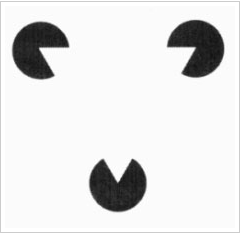Ok, I’m not sure what category this fits into so I’m thinking three of them: My Favorite Quote since there’s a little of that, Food for Digital Thought since there’s some of that, and a Personal Pearl of Wisdom since there’s also a touch of that.
What am I getting at? Well I was talking to a friend that has a kid whose age is just right to let her watch The Wizard of Oz. He said that they were singing some of the songs together and reciting some of the dialogue.
As soon as they said, “lions and tigers and bears! Oh my!” a thought hit my eye like a big Pizza Pie! “squares and circles and triangles! Oh my! Btw, I left out rectangles since it just didn’t have the same flow.
Where in the world am I going with this you ask? Well, I show people how to use the elements of visual design in their photography. I do this in my online class with the BPSOP, and I often remind people during my daily critiques in my “Stretching Your Frame of Mind” workshops I conduct all over the place.
Shape is one of these elements and if used to enhance your composition, you will definitely be on your way to creating stronger photos.
There are four basic shapes, hence the inclusion of three of them in my adjusted quote for any upcoming remake of the iconic movie. Although shapes are all around us there are four basic ones: circles, squares, triangles, and rectangles.
Whether the viewer knows it or not, he’ll see them and react. When you begin to see with the right side of your brain, the creative side, you’ll be able to use shapes in your imagery. They will provide a sense of structure and unity to your composition, and will be perceived by the viewer as systematic, stable, and symmetrical.
The shapes that are similar but are more irregular such as an isosceles triangle or a trapezoid have more energy. Besides those that are more prevalent in our world, the diamond is a great shape, filled with a great deal of energy and evokes a sense of motion; not to be overlooked.
There are even implied shapes that one can perceive through the use of Closure; one of the six concepts in the Psychology of Gestalt; For example, in this diagram the viewer will fill in the triangle:
Shapes live among us and once you begin seeing past first impressions you’ll be able to not only see the positive shapes, the implied shapes, but the negative shapes as well. When we think of shapes, we think of the kind that has mass and therefore considered as positive space.
However, a shape can be the negative variety that’s created by the positive space that surrounds it. Imagine an ornate fence that has a row of wrought iron circles at the top and running the length of the fence. The circles are positives shapes and have mass, but what about the area inside the round wrought iron? Those are also circles, but they have been created by the positive shape and have no mass. They are the negative shapes.
As I was talking about seeing past first impressions and using the right side of your brain, this certainly came in handy during my springtime in Paris workshop. The group went to the Palace of Versaille one cold and gray day so I was walking around looking for something else to shoot.
I noticed a group of Asians standing on the steps, all of them looking at the map of the entire grounds. What I saw was not a group of Asians all looking at maps, what I saw was a triangle made up of Asians all looking at their maps. I laughed and quickly took their picture, and as I always say, humor is the one thing that can work even with bad light.
Visit my workshop at: www. joebaraban.com and check out my workshop schedule at the top of this blog. Come shoot with me sometime.
JoeB






